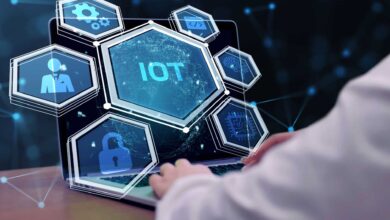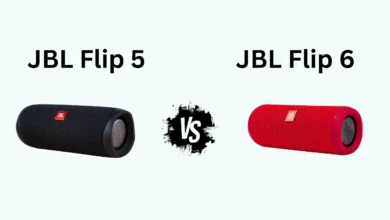What is IoT Device Management? A Complete Guide

The Internet of Things (IoT) is growing rapidly, with billions of connected devices being used in homes and businesses. Managing all these devices can be a major challenge. This is where IoT device management comes in.
What is IoT Device Management?
IoT device management refers to all the processes, tools, and capabilities needed to effectively configure, monitor, and maintain IoT devices throughout their lifecycle.
In simple terms, IoT device management gives you control over your connected devices so you can:
- Onboard and register new devices
- Configure device settings
- Organize devices into groups
- Remotely monitor device status
- Diagnose problems
- Update device software/firmware
- Ensure security
- Integrate device data with other apps
- Decommission devices
With effective IoT device management, organizations can reduce costs, minimize risks, and get the most value out of their connected devices.
Why is IoT Device Management Important?
As the number of connected devices grows exponentially, IoT device management is becoming increasingly important for several reasons:
1. Manage IoT Scale
The number of IoT devices is exploding. By 2025, there could be over 27 billion connected IoT devices worldwide. Manually managing so many distributed devices is impossible.
IoT device management platforms give you the tools to configure, control, and update thousands or even millions of devices from a central location. This scalability helps organizations adopt IoT faster and manage exponentially growing numbers of devices.
2. Reduce Security Risks
IoT devices can be vulnerable to cyber threats if not properly secured and updated. With IoT device management, organizations can continuously monitor devices to detect potential issues early. Platforms also make it easy to quickly deploy security patches and firmware updates across entire device fleets.
Staying on top of device security is critical for reducing the attack surface and preventing IoT botnets.
3. Cut IoT Costs
IoT device management provides the visibility and control needed to optimize IoT deployments. Organizations can identify underutilized assets to cut costs or predict maintenance needs to minimize downtime. Software updates can also add new functionality previously requiring new hardware purchases.
With better lifecycle management, enterprises can achieve a faster ROI on IoT investments.
4. Extract More IoT Data Value
Fragmented streams of IoT data are difficult to analyze. IoT device management platforms consolidate and contextualize data from diverse devices onto a single pane of glass. This enables organizations to gain a holistic view of device performance and turn raw data into meaningful business insights.
Key Capabilities of IoT Device Management Solutions
Leading enterprise IoT device management platforms have extensive capabilities to handle the full spectrum of device lifecycle management tasks.
Core IoT Device Management Capabilities:
- Device onboarding – Automatically register and configure large numbers of IoT devices
- Device organization – Group devices based on attributes like function or location
- Monitoring and diagnostics – Track device status and troubleshoot issues in real-time
- Remote control – Change settings or update software on remote devices
- Security management – Detect threats, encrypt data, and control access
- Device data management – Ingest, process, and analyze device data streams
Advanced IoT Platform Capabilities:
- End-to-end IoT security measures like cryptography and access controls
- Tools for edge/fog computing within IoT networks
- Data visualization dashboards for monitoring device data
- Analytics integration to process device data and find patterns
- Application enablement tools to build custom apps and solutions
- API integration with existing enterprise systems
- Artificial intelligence to add intelligence to IoT operations
By providing these kinds of extensive capabilities, IoT software platforms handle the heavy lifting of managing devices while allowing IT teams to focus on higher-level IoT initiatives.
IoT Device Management Architecture
Effective device management requires an infrastructure capable of handling connectivity, data, and device control at an enormous scale. A typical architecture includes:
Devices and sensors – The endpoints gathering data and delivering services. Devices connect through the field/access gateway.
Connectivity – Networks like WiFi, Bluetooth, LPWAN, and cellular-connected devices. IoT gateways aggregate and relay data between devices and platforms.
IoT platform – The software suite delivering core device management plus analytics, automation, and application enablement. Integrates with back-office apps.
Cloud/server infrastructure – Provides storage, computing capacity, and tools for development teams to build IoT applications.
Business logic and applications – Where data is turned into business insights then tactical actions to optimize operations, create better products/services, lower costs, etc.
While organizations can build their own IoT management software, commercial IoT platforms provide sophisticated capabilities out of the box so companies can accelerate IoT deployments.
Setting Up IoT Device Management
Getting an IoT system under management involves key steps:
1. Audit devices – Discover all devices/sensors across sites and build master asset inventory.
2. Onboard devices – Register devices into the platform. Could involve installing software agents if not agentless.
3. Configure settings – Enable encryption, set access permissions, thresholds for alerts, etc.
4. Organize devices – Group devices according to function, physical location, user department, or other criteria.
5. Analyze data – Ingest streams from devices into data lakes and dashboards. Provide reporting/analytics capabilities to users.
Once set up, the IoT management platform handles administration while gathering data and monitoring continues autonomously based on configured rules.
Choosing an IoT Management Platform
With IoT use cases being so widely varied, organizations should look for a platform that meets their specific needs. Considerations when evaluating options:
Deployment model – Cloud vs on-premises vs hybrid. Cloud platforms simplify rollout while some organizations need on-site solutions to handle privacy compliance, analytics at the edge, or mitigating latency.
Ecosystem integration – Support for specific protocols, device types, and operating systems. Ability to integrate with existing infrastructure.
Edge computing support – For deployments processing data closer to devices before the cloud.
IT ecosystem integration – APIs and pre-built connectors to ingest data into preferred analytics, workflow, and database solutions.
Ease of use – Intuitive dashboards and wizards to fast-track deployments with minimal coding. Learning curves affect user adoption.
Security capabilities – Sophisticated measures like encryption, certificates, authentication, and access controls are vital.
Reporting and analytics – The platform should contextualize data and provide clear reporting to inform business decisions.
Commercial model – Upfront license costs or subscription-based pricing. Scalability to support solutions as they grow.
Choosing a platform best fits technical and business requirements saves enterprises time, and resources, and reduces IoT project risks.
Benefits of IoT Device Management Solutions
Effective management is fundamental to operating business-grade IoT solutions at scale. The benefits of comprehensive IoT device lifecycle management include:
Agility to seize IoT opportunities – Quickly trial devices and scale solutions without deployment bottlenecks.
Do more with less – Manage exponential device growth without expanding admins. Save technicians’ time better spent on value-added IT projects.
Enhanced reliability and uptime – Resolve device failures remotely. Identify anomalies predicting outages.
Improved cost efficiency – Lower costs through better utilization rates, predictive maintenance, warranty analytics, and reduced manual oversight.
Mitigated security risks – Actively hardened the full IoT stack against attacks. Reduce vulnerabilities through regular patching and encryption key management. Prepare against threats like botnets.
Compliance assurance – Maintain audit trails verifying who accessed devices/data and when. Tools like certificate-based authentication improve compliance reporting.
Better data insights – Analyze telemetry and diagnose issues faster with centralized data and dashboards showing real-time views across devices.
Higher ROI – Management capabilities like software-based device upgrades extend hardware lifespan. Data analysis provides optimization opportunities. Overall, increased visibility and control derived from IoT device management solutions drive substantial ROI.
IoT Device Management Use Cases
IoT device management platforms enable organizations across industries by simplifying the job of administering devices, deriving insights, and keeping everything secure. Common examples include:
Smart buildings – Manage HVAC, lighting sensors, video surveillance cameras
Smart factories – Monitor product lines, heavy machinery
Utilities – Monitor grid assets like transformers and poles with IoT sensors
Smart cities – Administer traffic signals, streetlights, water treatment plants
Energy companies – Manage pipelines, wells, turbines, and storage facilities with sensors
Transportation – Track vehicle locations, analyze usage patterns
Healthcare – Manage medical devices, patient monitoring equipment
These are just some examples of how comprehensive IoT device management powers Smart City, Industry 4.0, Smart Building, Smart Energy, and other IoT solutions.
Now that key concepts of IoT device management have been covered, here are answers to frequently asked questions for more IoT management insights:
FAQ on IoT Device Management
What activities are involved in IoT device management?
IoT device management activities span the full device lifecycle including:
- Onboarding – Registering, authenticating and authorizing devices
- Configuration – Customizing device parameters for the network
- Monitoring – Tracking device status like connectivity and data usage
- Maintenance – Performing updates and remote troubleshooting
- Data Management – Securely transmitting then analyzing device data
- Decommissioning – Retiring devices when replacing or at the end of service
What capabilities should an IoT platform have?
Essential IoT software platform capabilities consist of:
Core device management functions like bulk onboarding and over-the-air updates
Connectivity supporting diverse wired and wireless protocols
Data and analytics tools to handle ingestion through visualization
Embedded security features across devices, gateways, platforms, cloud, and connections
Automation to orchestrate updates, analytics, and data routing
Application enablement with tools to build customizable solutions
How does IoT device management simplify deployments?
IoT device management simplifies deployments by providing:
Out-of-the-box capabilities – Comprehensive platforms minimize the need for custom coding
Intuitive interfaces – Template workflows, wizards, and visual tools accelerate setup
Bulk administration – Simplifies registering, updating, and analyzing thousands of devices
Auto-discovery capabilities – Detect already deployed assets requiring onboarding
Integration adaptors – Connect to other management systems like ITSM and DCIM
What are the consequences of poor IoT device management?
If IoT deployments outgrow management capabilities, consequences mount in risks and costs:
- Security exploits – Uncontrolled devices have vulnerable software/firmware
- Compliance failures – Inability to account for devices accessing data
- Profit losses – From subpar asset utilization and productivity
- Revenue impact – Business disruptions from IoT service outages
- Inefficient manual processes – Attempting to manage devices sans automation
- IT burden – Undue strains on IT staff to control devices manually
- Vendor finger-pointing – Unclear who owns administration across fragmented systems
Getting IoT device management right from the start mitigates these pitfalls.
Which industries benefit most from IoT device management?
IoT device management delivers value across many industries such as:
Energy – Smart Grid, oil/gas infrastructure
Manufacturing – Machinery, assembly lines
Smart buildings – HVAC, lighting, workplace optimization
Transportation – Rail, fleet vehicles, smart ports
Utilities – Transmission grids, water treatment plants
Cities – Traffic systems, public infrastructure Healthcare – Medical devices, patient monitoring equipment
Essentially any industry adopting IoT needs scalable device management capabilities.
What questions should you ask IoT platform vendors?
Key questions for IoT platform providers include:
- How long have you offered IoT device management solutions?
- How many IoT devices are currently managed with your software?
- Which protocols and data formats are natively supported?
- What IoT security standards does your platform meet?
- What third-party systems can you integrate with via APIs?
- Does your system support edge computing and offline functionality?
- How are you investing in analytics, automation, and AI capabilities?
- How much effort does client customization require?
- What training resources will help administrators use your system effectively?
Their responses will demonstrate if a provider truly specializes in enterprise IoT implementations and can scale to your needs.
Conclusion
Effective IoT device management delivers the visibility and control necessary to operate IoT solutions reliably, securely, and cost-efficiently as deployments expand. A capable management platform hides complexity so overburdened IT teams can focus on extracting value from IoT data to drive operational optimizations rather than just administering devices.
As factories, facilities, fleets, and cities implement ambitious Industry 4.0, Smart Building, and Smart City initiatives, they turn to proven IoT device management platforms purpose-built to skillfully govern millions of distributed endpoints. With rigorous management capabilities handling the heavy lifting behind the scenes, IoT business cases and use cases flourish – creating future-ready organizations.





